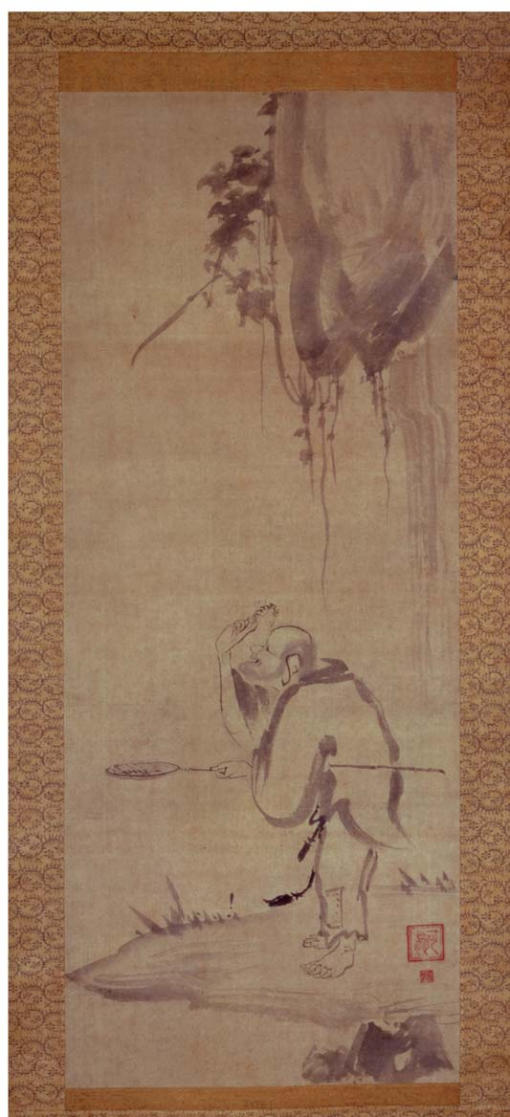The Shrimp Eater
Editor's Note: This resource can be used in conjunction with the lesson Awakenings: Zen Figure Painting in Medieval Japan.
The “Shrimp Eater” was an eccentric Zen Buddhist saint, belonging to a category of individuals including historical personages as well as some who may not have existed as living figures, and who were likely co-opted from Daoist regional deities. These individuals often existed outside the realms of normal thought and behavior as a result of their understanding of Enlightenment. Some, such as this individual, did not even adhere to basic tenets of Buddhism, such as, in this case, the prohibition against consuming meat. Thus, these “scattered saints” embody some of the contradictions inherent in Zen Buddhism.
This painting is an example of a hanging scroll. Most scrolls of this type, in the context of Zen Buddhism, were not typically hung in temple halls for the purpose of communal worship. Rather, Zen Buddhist hanging scrolls were usually meant to be placed in monks’ or abbots’ quarters for the purpose of personal contemplation. In this way, most Zen hanging scrolls served as inspiration for monks’ personal paths to Enlightenment.
The Shrimp Eater. Kao (act. first half of 14th c.); seals: “Kao,” “Ninga.” Japanese, Nanbokucho period (1336–1392). Hanging scroll, ink on paper; 87.0 x 34.5 cm. Tokyo National Museum. Important Cultural Property. Courtesy of Tokyo National Museum and Agency for Cultural Affairs of Japan.


